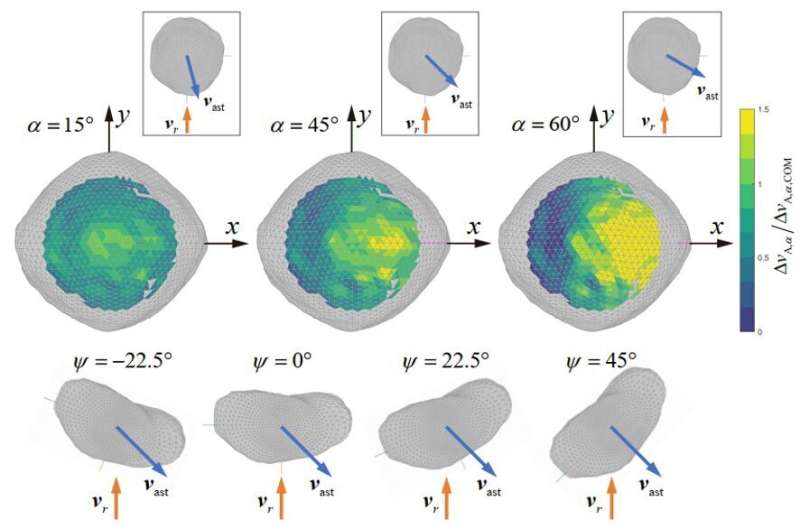They found a well-designed off-center impact appeared to increase the deflection efficiency by over 50% compared to the central impact used by the DART mission.
Their work shows a surprising result that no matter what the target asteroid looks like or which location/direction to impact, the velocity change of the asteroid is always located on a unique hodograph, which is only determined by the material properties of the asteroid. They call it the Delta-v hodograph.
"The Delta-v hodograph is actually a distortion of an ideal spherical surface. And the determination of a realistic profile requires quantifying the effect of impact angles on momentum transfer efficiencies, which can be calculated from hydrodynamical simulations of oblique impacts," the researchers explained.
With numerical simulations, the unique hodograph is obtained and applied to optimize the impact location or direction, considering both the orbital geometry and asteroid shapes. For Bennu-like near-spherical asteroids, the desired impulse is sensitive to impact locations, and the optimal impact geometry deviates from normal central impact to the leading side in some orbital geometries, especially for larger orbital geometry angles.
The effective deflection is increased by up to 50% when striking the optimal location compared with a simple centered impact.
For Itokawa-like elongated asteroids, the impact direction determines the distribution of Delta-v set on the hodograph and, thus, the optimal rotational phase to impact. A preferable direction can even increase the final deflect distance by 100% compared to the value for an inappropriate direction.
"This work presents a simple and innovative application of Delta-v hodograph to the optimal geometry design in kinetic deflections of PHAs, as a connection of hyper-velocity impact and long-term orbital dynamics," said the researchers. "The proposed optimization method should be considered in the global trajectory design of future asteroid deflection missions, where the expected deflection distance is determined by not only the orbital geometry but also the impact geometry."
More information: Yifei Jiao et al, Optimal Kinetic-Impact Geometry for Asteroid Deflection Exploiting Delta-V Hodograph, Journal of Guidance, Control, and Dynamics (2022). DOI: 10.2514/1.G006876
Provided by Tsinghua University



